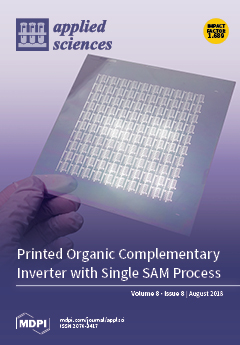Open AccessArticle
Cartilage Differentiation of Bone Marrow-Derived Mesenchymal Stem Cells in Three-Dimensional Silica Nonwoven Fabrics
by
Shohei Ishikawa 1, Kazutoshi Iijima 2,†, Kohei Sasaki 3, Mineo Hashizume 2, Masaaki Kawabe 3 and Hidenori Otsuka 1,4,*
1
Graduate School of Science, Tokyo University of Science, 1-3 Kagurazaka, Shinjuku-ku, Tokyo 162-8601, Japan
2
Department of Industrial Chemistry, Faculty of Engineering, Tokyo University of Science, 12-1 Ichigayafunagawara-machi, Shinjuku-ku, Tokyo 162-0826, Japan
3
Japan Vilene Company Ltd., 7 kita-Tone, Koga, Ibaraki 306-0213, Japan
4
Department of Applied Chemistry, Faculty of Science, Tokyo University of Science, 1-3 Kagurazaka, Shinjuku-ku, Tokyo 162-8601, Japan
†
Present address: Faculty of Engineering, Yokohama National University, 79-5 Tokiwadai, Hodogaya-ku, Yokohama 240-8501, Japan.
Cited by 13 | Viewed by 5219
Abstract
In cartilage tissue engineering, three-dimensional (3D) scaffolds provide native extracellular matrix (ECM) environments that induce tissue ingrowth and ECM deposition for in vitro and in vivo tissue regeneration. In this report, we investigated 3D silica nonwoven fabrics (Cellbed
®) as a scaffold
[...] Read more.
In cartilage tissue engineering, three-dimensional (3D) scaffolds provide native extracellular matrix (ECM) environments that induce tissue ingrowth and ECM deposition for in vitro and in vivo tissue regeneration. In this report, we investigated 3D silica nonwoven fabrics (Cellbed
®) as a scaffold for mesenchymal stem cells (MSCs) in cartilage tissue engineering applications. The unique, highly porous microstructure of 3D silica fabrics allows for immediate cell infiltration for tissue repair and orientation of cell–cell interaction. It is expected that the morphological similarity of silica fibers to that of fibrillar ECM contributes to the functionalization of cells. Human bone marrow-derived MSCs were cultured in 3D silica fabrics, and chondrogenic differentiation was induced by culture in chondrogenic differentiation medium. The characteristics of chondrogenic differentiation including cellular growth, ECM deposition of glycosaminoglycan and collagen, and gene expression were evaluated. Because of the highly interconnected network structure, stiffness, and permeability of the 3D silica fabrics, the level of chondrogenesis observed in MSCs seeded within was comparable to that observed in MSCs maintained on atelocollagen gels, which are widely used to study the chondrogenesis of MSCs in vitro and in vivo. These results indicated that 3D silica nonwoven fabrics are a promising scaffold for the regeneration of articular cartilage defects using MSCs, showing the particular importance of high elasticity.
Full article
►▼
Show Figures





